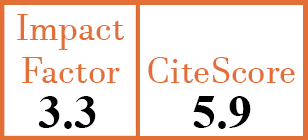Full Papers
Evaluating and predicting disease damage accumulation of IgG4-RD over ten years: utility of the IgG4-related Disease Damage Index
J. Li1, S. Huang2, Y. Wang3, L. Peng4, J. Zhou5, Q. Luo6, N. Zhang7, J. Zhang8, X. Yang9, Y. Nie10, J. Meng11, M. Li12, Y. Fei13, W. Zhang14
- Dept of Rheumatology and Clinical Immunology, Peking Union Medical College Hosp, Chinese Academy of Medical Sciences & Peking Union Medical College, National Clinical Research Center for Dermatologic and Immunologic Diseases (NCRC-DID), State Key Laboratory of Complex Severe and Rare Diseases, The Ministry of Education Key Lab, Beijing, China.
- Dept of Rheumatology and Clinical Immunology, Peking Union Medical College Hosp, Chinese Academy of Medical Sciences & Peking Union Medical College, National Clinical Research Center for Dermatologic and Immunologic Diseases (NCRC-DID), State Key Laboratory of Complex Severe and Rare Diseases, The Ministry of Education Key Lab, Beijing, China.
- Dept of Rheumatology and Clinical Immunology, Peking Union Medical College Hosp, Chinese Academy of Medical Sciences & Peking Union Medical College, National Clinical Research Center for Dermatologic and Immunologic Diseases (NCRC-DID), State Key Laboratory of Complex Severe and Rare Diseases, The Ministry of Education Key Lab, Beijing, China.
- Dept of Rheumatology and Clinical Immunology, Peking Union Medical College Hosp, Chinese Academy of Medical Sciences & Peking Union Medical College, National Clinical Research Center for Dermatologic and Immunologic Diseases (NCRC-DID), State Key Laboratory of Complex Severe and Rare Diseases, The Ministry of Education Key Lab, Beijing, China.
- Dept of Rheumatology and Clinical Immunology, Peking Union Medical College Hosp, Chinese Academy of Medical Sciences & Peking Union Medical College, National Clinical Research Center for Dermatologic and Immunologic Diseases (NCRC-DID), State Key Laboratory of Complex Severe and Rare Diseases, The Ministry of Education Key Lab, Beijing, China.
- Department of Basic Medical Science, School of Medicine, Tsinghua University, Beijing, China.
- Dept of Rheumatology and Clinical Immunology, Peking Union Medical College Hosp, Chinese Academy of Medical Sciences & Peking Union Medical College, National Clinical Research Center for Dermatologic and Immunologic Diseases (NCRC-DID), State Key Laboratory of Complex Severe and Rare Diseases, The Ministry of Education Key Lab, Beijing, China.
- Dept of Rheumatology and Clinical Immunology, Peking Union Medical College Hosp, Chinese Academy of Medical Sciences & Peking Union Medical College, National Clinical Research Center for Dermatologic and Immunologic Diseases (NCRC-DID), State Key Laboratory of Complex Severe and Rare Diseases, The Ministry of Education Key Lab, Beijing, China.
- Dept of Rheumatology and Clinical Immunology, Peking Union Medical College Hosp, Chinese Academy of Medical Sciences & Peking Union Medical College, National Clinical Research Center for Dermatologic and Immunologic Diseases (NCRC-DID), State Key Laboratory of Complex Severe and Rare Diseases, The Ministry of Education Key Lab, Beijing, China.
- Dept of Rheumatology and Clinical Immunology, Peking Union Medical College Hosp, Chinese Academy of Medical Sciences & Peking Union Medical College, National Clinical Research Center for Dermatologic and Immunologic Diseases (NCRC-DID), State Key Laboratory of Complex Severe and Rare Diseases, The Ministry of Education Key Lab, Beijing; and Dept of Internal Medicine, Peking Union Medical College Hosp, Chinese Academy of Medical Sciences & Peking Union Medical College, Beijing, China.
- Department of Rheumatology, Xuzhou Central Hospital, Xuzhou, China.
- Dept of Rheumatology and Clinical Immunology, Peking Union Medical College Hosp, Chinese Academy of Medical Sciences & Peking Union Medical College, National Clinical Research Center for Dermatologic and Immunologic Diseases (NCRC-DID), State Key Laboratory of Complex Severe and Rare Diseases, The Ministry of Education Key Lab, Beijing, China.
- Dept of Rheumatology and Clinical Immunology, Peking Union Medical College Hosp, Chinese Academy of Medical Sciences & Peking Union Medical College, National Clinical Research Center for Dermatologic and Immunologic Diseases (NCRC-DID), State Key Laboratory of Complex Severe and Rare Diseases, The Ministry of Education Key Lab, Beijing, China. feiyunyun@pumch.cn
- Dept of Rheumatology and Clinical Immunology, Peking Union Medical College Hosp, Chinese Academy of Medical Sciences & Peking Union Medical College, National Clinical Research Center for Dermatologic and Immunologic Diseases (NCRC-DID), State Key Laboratory of Complex Severe and Rare Diseases, The Ministry of Education Key Lab, Beijing, China. zhangwen91@sina.com
CER18726
Full Papers
PMID: 40737078 [PubMed]
Received: 18/03/2025
Accepted : 16/06/2025
In Press: 30/07/2025
Abstract
OBJECTIVES:
To describe the cumulative degree of disease-induced damage in patients with immunoglobulin G4-related disease (IgG4-RD) during long-term follow-up.
METHODS:
A total of 334 patients who were diagnosed with IgG4-RD and followed for over 5 years were included from a prospective cohort, with 99 followed for 10 years. The Chinese IgG4-RD Consortium IgG4-RD Damage Index (DI) was scored at baseline (6 months), 5 years, and 10 years. The total DI scores and the frequencies of damage domains and items were described. The characteristics and treatment regimens of patients in increased damage and stable damage subgroups were compared. The risk factors for damage accrual at 5 years and 10 years were explored.
RESULTS:
The DI score increased from 0.89 at baseline to 1.29 at 10 years. The ‘pancreatic’ (13.4%), ‘liver/biliary tree’ (7.2%), and ‘other’ (28.9%) domains presented the greatest degree of damage across the assessments. In the ‘other’ domain, malignancy and diabetes mellitus were crucial items and increased from 0.3% to 5.1% and from 3.6% to 14.4% within 5 years, respectively. Glucocorticoid side effects were also important damage factors. The risk factors for damage accrual at 5 years were baseline pancreatic involvement (OR 2.11, 95% CI: 1.27–3.50; p=0.004) and relapse frequency (OR 1.40, 95% CI: 1.04–1.89; p=0.028). The risk factor for damage accrual at 10 years was baseline pancreatic involvement (OR 2.89, 95% CI: 1.02–8.16; p=0.045).
CONCLUSIONS:
The long-term damage caused by IgG4-RD includes organ damage and treatment-related damage. The damage caused by IgG4-RD accumulates over time. Pancreatic damage, malignancy, and diabetes are highlighted. Baseline pancreatic involvement and relapse frequency might predict damage accrual within 5 years. The long-term management of IgG4-RD should aim to preserve organ function while minimising treatment-related damage.



